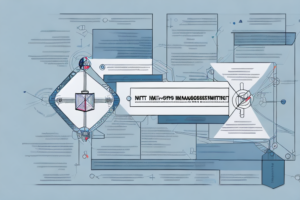What is security control assessment in RMF?
7 min read
A computer system with a security shield protecting it
Security Control Assessment (SCA) is the process of evaluating and testing the effectiveness of security controls in an information system. It is an essential component of the Risk Management Framework (RMF) that helps organizations to identify, analyze, and mitigate cybersecurity risks. In this article, we will explore the fundamentals of security control assessment in RMF, its key stages, best practices, and challenges faced by organizations in implementing SCA.
Understanding the Risk Management Framework (RMF)
The Risk Management Framework (RMF) is a structured approach to managing cybersecurity risks in an information system. It provides a framework for federal agencies, contractors, and other organizations to assess and manage cybersecurity risks by implementing effective information security programs. RMF consists of six stages: initiation, categorization, selection, implementation, assessment, and authorization. Security Control Assessment is a critical process that takes place during the assessment stage of RMF to evaluate the effectiveness of security controls in mitigating identified risks.
One of the key benefits of using RMF is that it provides a standardized approach to managing cybersecurity risks across different organizations. This allows for better collaboration and information sharing between agencies and contractors, which can help to identify and mitigate risks more effectively. Additionally, RMF emphasizes the importance of continuous monitoring and improvement, which means that organizations are constantly evaluating and updating their security controls to stay ahead of emerging threats.
However, implementing RMF can be a complex and time-consuming process, especially for organizations with limited resources or expertise in cybersecurity. It requires a significant investment in training, tools, and personnel to ensure that the framework is implemented effectively and consistently. Furthermore, RMF is not a one-size-fits-all solution, and organizations may need to tailor the framework to meet their specific needs and risk profiles.
The role of Security Control Assessment in RMF
The primary objective of Security Control Assessment in RMF is to ensure that the security controls implemented in an organization’s information system are effective in addressing the identified risks. The assessment process involves testing security controls, verifying their configuration, and evaluating their effectiveness. It helps organizations to identify gaps in security controls and areas that need improvement. The assessment also helps organizations ensure that their information systems comply with applicable laws, regulations, and policies.
One of the key benefits of Security Control Assessment is that it provides organizations with a comprehensive understanding of their security posture. By identifying vulnerabilities and weaknesses in their information systems, organizations can take proactive measures to mitigate risks and improve their overall security posture. This can help organizations to prevent security breaches, data loss, and other security incidents that can have a significant impact on their operations and reputation.
Another important aspect of Security Control Assessment is that it helps organizations to stay up-to-date with the latest security threats and trends. As new threats emerge, organizations need to adapt their security controls to address these threats effectively. By regularly assessing their security controls, organizations can ensure that they are prepared to deal with new and emerging threats and can stay ahead of the curve when it comes to cybersecurity.
How security control assessment helps organizations maintain compliance
Security Control Assessment is a critical component of compliance programs as it helps organizations ensure that their information systems comply with applicable regulations and policies. It provides evidence that security controls are working effectively and are compliant with policies and regulations. The assessment reports provide insights into areas that need improvement and help organizations to prioritize remediation efforts. Additionally, the assessment process enables organizations to demonstrate due diligence and mitigate legal and financial risks associated with non-compliance.
Another benefit of security control assessment is that it helps organizations to stay up-to-date with the latest security threats and vulnerabilities. The assessment process involves identifying potential risks and vulnerabilities in the organization’s information systems and developing strategies to mitigate them. This helps organizations to stay ahead of potential security threats and to implement proactive measures to prevent security breaches.
Furthermore, security control assessment can also help organizations to improve their overall security posture. By identifying areas that need improvement, organizations can implement changes to their security controls and policies to strengthen their security posture. This can help to reduce the likelihood of security breaches and improve the organization’s overall security resilience.
The different stages of security control assessment in RMF
The Security Control Assessment process in RMF consists of three stages: pre-assessment, assessment, and post-assessment. The pre-assessment stage involves reviewing and validating the security control baselines, developing the assessment plan, and identifying the assessment team. The assessment stage involves conducting the actual testing of security controls, documenting the results, and identifying the findings. The post-assessment stage involves developing the assessment report, identifying the remediation actions, and conducting a follow-up assessment to verify the effectiveness of the remediation actions.
Conducting a successful security control assessment: Key steps to follow
Conducting a successful Security Control Assessment requires careful planning, execution, and documentation. The following are the key steps to follow:
- Define the scope of the assessment
- Identify the assessment team
- Develop the assessment plan
- Evaluate security controls
- Document the results
- Identify the findings
- Develop the assessment report
- Identify remediation actions
- Conduct follow-up assessment
Common challenges faced during security control assessment and how to overcome them
Security Control Assessment can be a complex and challenging process for organizations. Some of the common challenges faced during the assessment process include lack of resources, inadequate documentation, insufficient expertise, and changing security threats. To overcome these challenges, organizations can engage external assessors, automate the assessment process, develop comprehensive documentation, and continuously monitor the security threats and adjust the security controls accordingly.
Best practices for implementing security controls in RMF
To effectively implement security controls in RMF, organizations should follow the following best practices:
- Develop a comprehensive security plan
- Implement security controls based on risk management principles
- Regularly test and validate security controls
- Document security controls and their effectiveness
- Implement continuous monitoring and improvement processes
- Train and educate employees on information security practices
The importance of ongoing monitoring and evaluation in security control assessment
Continuous monitoring and evaluation of security controls are critical components of Security Control Assessment. Organizations need to continuously monitor the changes in security threats, technology, and regulations and adjust their security controls accordingly. The monitoring process helps organizations detect and respond to security incidents and assess the effectiveness of security controls. Additionally, continuous evaluation enables organizations to identify areas for improvement and prioritize remediation efforts.
How to choose the right tools and techniques for security control assessment in RMF
The choice of tools and techniques for Security Control Assessment depends on the complexity of the information system and the type of security controls implemented. Organizations can use automated tools, such as vulnerability scanners, to test security controls. Manual techniques, such as penetration testing and social engineering, can also be used to evaluate the effectiveness of security controls. Organizations should select tools and techniques that are appropriate for their information system and align with their risk management strategy.
Real-life examples of successful security control assessments in RMF
Organizations that have implemented RMF and Security Control Assessment processes have achieved significant improvements in their information security posture. For example, the U.S. Department of Defense (DoD) has implemented RMF and Security Control Assessment to improve the security of its information systems. The DoD has reported significant reductions in security incidents and improved compliance with regulations and policies. Other organizations, such as financial institutions and healthcare providers, have also reported success in improving their security posture through Security Control Assessment and RMF.
Top trends and future directions for security control assessment in RMF
Security Control Assessment in RMF is an evolving process that is impacted by changes in technology, regulations, and security threats. Some of the top trends and future directions for Security Control Assessment in RMF include increased use of automation tools, adoption of artificial intelligence and machine learning, and integration of security into the software development life cycle (SDLC). Additionally, organizations are likely to face new challenges, such as managing security in cloud environments, securing Internet of Things (IoT) devices, and addressing the emerging threats associated with quantum computing.
Frequently asked questions about security control assessment in RMF answered
Q: What is the role of Security Control Assessment in RMF?
A: The role of Security Control Assessment in RMF is to evaluate the effectiveness of security controls in mitigating identified cybersecurity risks.
Q: What are the best practices for implementing security controls in RMF?
A: The best practices for implementing security controls in RMF include developing a comprehensive security plan, implementing security controls based on risk management principles, regularly testing and validating security controls, documenting security controls, implementing continuous monitoring and improvement processes, and training and educating employees on information security practices.
Q: What are the common challenges faced during security control assessment in RMF?
A: The common challenges faced during security control assessment in RMF include lack of resources, inadequate documentation, insufficient expertise, and changing security threats.
Conclusion: Why Security Control Assessment is crucial for safeguarding your organization’s assets
Security Control Assessment in RMF is an essential process for organizations to safeguard their information systems and assets. It enables organizations to identify cybersecurity risks, evaluate the effectiveness of security controls, and ensure compliance with regulations and policies. By following the best practices and addressing the challenges of Security Control Assessment, organizations can improve their security posture, reduce cybersecurity risks, and protect their valuable assets.



